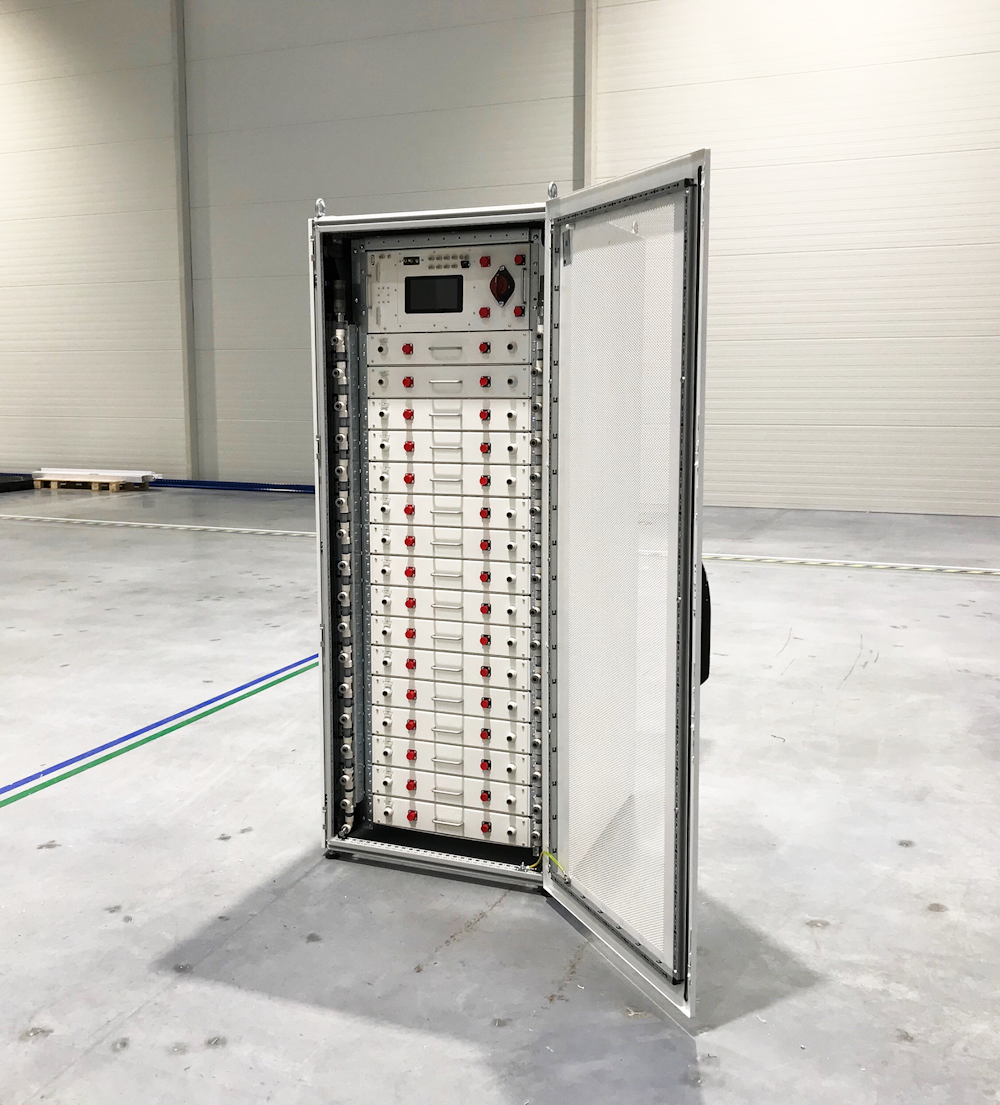Introducing Voltrack: modular stationary storage energy from Northvolt
18 April, 2019
Development of Northvolt’s stationary energy storage system, Voltrack Generation 1, enters a new phase as the first unit is shipped from its manufacturing facility.
The event represents a milestone for Northvolt and comes as the energy industry becomes increasingly aware of the transformative potential that stationary storage will have for global energy markets in enabling the time-shifting of renewable power from point of generation to point of use.
Leveraging Northvolt’s experience of developing battery modules for industrial vehicle applications and assembled at Northvolt Battery Systems in Gdansk, Poland, Voltrack is a liquid-cooled Li-ion battery system built for demanding industrial energy storage applications.
Voltrack contains sixteen battery modules together delivering a peak power output up to 170 kW, continuous power output up to 140 kW and a usable energy capacity of 175 kWh. A standalone solution, Voltrack features self-contained cooling and energy management systems. However, multiple Voltrack systems may be linked to meet the energy storage needs of customers operating at utility, commercial or industrial scales.
As validation continues, Northvolt is also working towards the development of several other Voltrack variants, including ones featuring alternate cooling systems.

Amidst the landscape of new energy there exists a wide range of settings within which Voltrack will be ideally suited to deliver the benefits of energy storage. The electricity grid itself is the prime example. Here, utility-scale battery storage is already proving itself the ideal solution to serve multiple roles. Key use-cases include, short duration storage, energy time-shifting and peaking capacity, frequency regulation and many more ancillary functions which support grid stability and enable greater use of renewables.
In commercial and industrial settings, battery storage brings other benefits. For instance, allowing for control over when electricity is drawn from the grid, battery storage opens up a route to avoiding peak charges. Moreover, if coupled with solar PV systems, storage allows for greater use of self-generated electricity together with the means to more fully engage in new and emerging practices disrupting the conventional energy system, such as participation in emerging microgrid electricity markets. On-site battery storage also provides the assurance of reliable backup power.
Although deployment of stationary energy storage has been modest to date, industry forecasters are united in expectation of a dramatic uptake in energy storage from 2020 onwards.
A recent report from energy analysis firm, Wood Mackenzie Power and Renewables, provides perspective on this shifting landscape (Global Energy Storage Outlook 2019), noting that global energy storage deployments held compound annual growth rate of 74% between 2013-2018. Year-on-year growth from 2017 to 2018 was 140%, resulting in installed capacity reaching 6 GWh by the end of 2018.
The analysts forecast the global energy storage market growing to 158 GWh in 2024, with deployment on the grid (known as front-of-meter) to support electricity networks remaining the largest end-use.
The dominant force behind ESS deployment is undoubtedly fallings costs of batteries. According to Bloomberg New Energy Finance (BNEF), the levelized cost of electricity (LCOE) — a benchmark metric for the cost of a technology delivering electricity over its lifespan — for Li-ion battery storage has become increasingly competitive.
BNEF’s recent analysis of over 7,000 projects worldwide revealed that Li-ion battery LCOE has fallen 35% to $187 per MWh since the first half of 2018 (BNEF). An implication of the trend is that Li-ion based energy storage, and the business cases it enables, is an increasingly viable commercial option compared with earlier years in which its deployment was constrained on economic grounds.
BNEF reports: “Batteries co-located with solar or wind projects are starting to compete, in many markets and without subsidy, with coal- and gas-fired generation for the provision of ‘dispatchable power’ that can be delivered whenever the grid needs it (as opposed to only when the wind is blowing, or the sun is shining).”